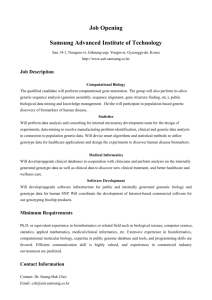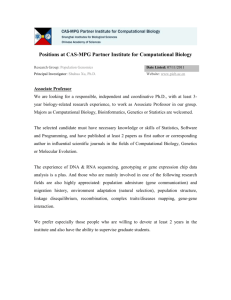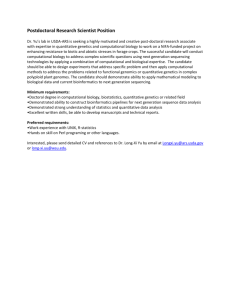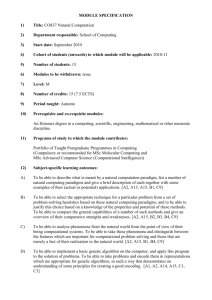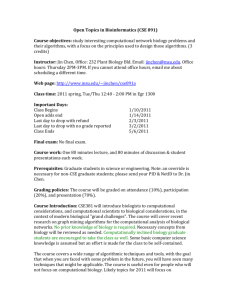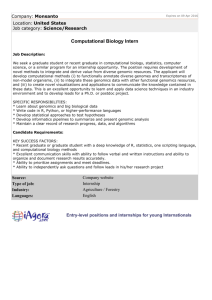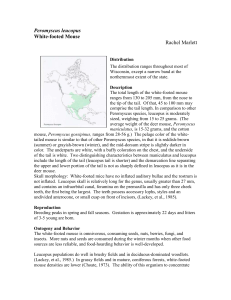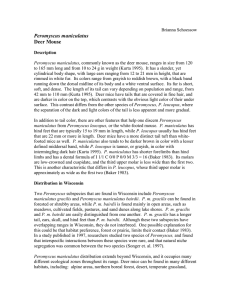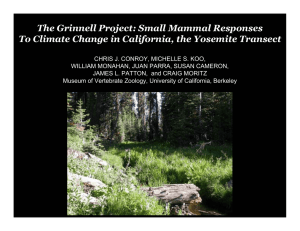Computational Life Science Research
advertisement
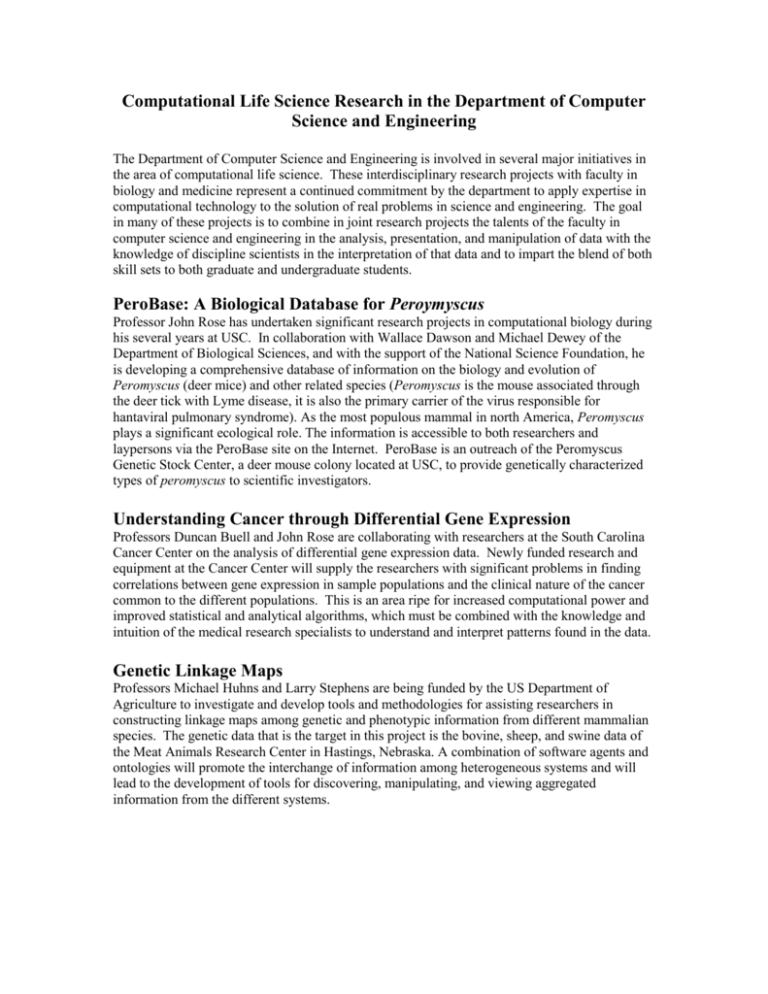
Computational Life Science Research in the Department of Computer Science and Engineering The Department of Computer Science and Engineering is involved in several major initiatives in the area of computational life science. These interdisciplinary research projects with faculty in biology and medicine represent a continued commitment by the department to apply expertise in computational technology to the solution of real problems in science and engineering. The goal in many of these projects is to combine in joint research projects the talents of the faculty in computer science and engineering in the analysis, presentation, and manipulation of data with the knowledge of discipline scientists in the interpretation of that data and to impart the blend of both skill sets to both graduate and undergraduate students. PeroBase: A Biological Database for Peroymyscus Professor John Rose has undertaken significant research projects in computational biology during his several years at USC. In collaboration with Wallace Dawson and Michael Dewey of the Department of Biological Sciences, and with the support of the National Science Foundation, he is developing a comprehensive database of information on the biology and evolution of Peromyscus (deer mice) and other related species (Peromyscus is the mouse associated through the deer tick with Lyme disease, it is also the primary carrier of the virus responsible for hantaviral pulmonary syndrome). As the most populous mammal in north America, Peromyscus plays a significant ecological role. The information is accessible to both researchers and laypersons via the PeroBase site on the Internet. PeroBase is an outreach of the Peromyscus Genetic Stock Center, a deer mouse colony located at USC, to provide genetically characterized types of peromyscus to scientific investigators. Understanding Cancer through Differential Gene Expression Professors Duncan Buell and John Rose are collaborating with researchers at the South Carolina Cancer Center on the analysis of differential gene expression data. Newly funded research and equipment at the Cancer Center will supply the researchers with significant problems in finding correlations between gene expression in sample populations and the clinical nature of the cancer common to the different populations. This is an area ripe for increased computational power and improved statistical and analytical algorithms, which must be combined with the knowledge and intuition of the medical research specialists to understand and interpret patterns found in the data. Genetic Linkage Maps Professors Michael Huhns and Larry Stephens are being funded by the US Department of Agriculture to investigate and develop tools and methodologies for assisting researchers in constructing linkage maps among genetic and phenotypic information from different mammalian species. The genetic data that is the target in this project is the bovine, sheep, and swine data of the Meat Animals Research Center in Hastings, Nebraska. A combination of software agents and ontologies will promote the interchange of information among heterogeneous systems and will lead to the development of tools for discovering, manipulating, and viewing aggregated information from the different systems.
